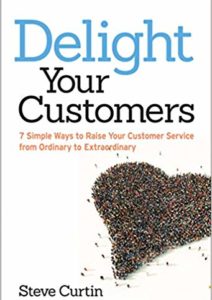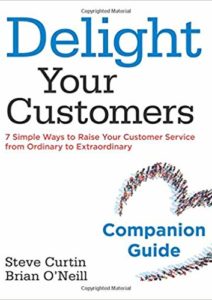Serving is selling
I recently struck up a conversation with my insurance agent, Kevin, about the link between customer service and sales. We both agreed that the line separating these two distinct disciplines is fuzzy. Where does customer service stop and selling start?
Kevin said that while his company tends to reward agents for writing new business, the most important numbers to him are his customers’ renewal rates. His agency is always number one, two, or three in the market with renewal rates consistently above 90 percent – and that includes policyholders who have moved out-of-state, are no longer driving, or are deceased. Renewal rates are stratified based on policyholder tenure (i.e., one year, 2-4 years, and five or more years), but the one that matters most to Kevin is the renewal rate for customers who’ve been with him five or more years. Currently, this rate is 92 percent.
When I asked why he thought his renewal rates were so high, he mentioned that his company uses proprietary software that improves his organization, productivity, and responsiveness. It lists to-dos, runs reports, stores prewritten emails for common issues (such as buying a new home, adding an umbrella policy, scheduling a financial review, etc.), manages email campaigns, archives historical data (such as a past claim or a customer’s request for replacement auto insurance ID cards), and flags xDates (future dates that require Kevin’s attention). My homeowner’s policy, for instance, was flagged because my mortgage recently transferred to a new mortgage company. Because of this feature, when I contacted Kevin about a different matter, he was prompted to confirm the name of the new mortgage company to ensure the accuracy of his records. To me, this gesture demonstrates that Kevin is interested, engaged, and prepared. This instills confidence, which is the number one reason why customers choose to buy where they buy.
Another feature of the software alerts Kevin’s staff when a caller has not spoken personally with Kevin in the previous six months. If so, assuming Kevin is in the office and available, as the call is winding down they are instructed to say to the caller, “Do you have a few seconds? Kevin has a quick question for you.” Nearly everyone says “sure” and the call is then transferred to Kevin. This gives him a chance to personally check-in with clients to verify recent changes to their policies (such as the change in mortgage companies in my personal example above), follow up on a past claim, address concerns, etc. And since he’s also the past-president of a large local HOA with unique insight into local politics and area development, Kevin can often connect with customers on a personal level too.
Even with all the really cool software features at his disposal, Kevin still practices “old school” customer service by hand-signing correspondence that comes from his office and, in many cases, personalizing it further by adding a short note referencing an earlier conversation or the customer’s children – as Kevin also serves in leadership roles for a local youth sports league and high school football and baseball programs.
It’s well documented that current customers are infinitely more valuable than prospective customers. According to Gartner, 80 percent of future profits will come from 20 percent of existing customers. Research by Bain & Company revealed that increasing (current) customer retention rates by 5 percent increases profits by 25 to 95 percent.
Given his agency’s 90-plus percent renewal rates, Kevin appears to be profiting from his approach. By expressing interest in the lives of his customers, reconnecting with callers he hasn’t spoken to in a while, and hand-signing correspondence that comes directly from his office, often adding a brief personal note, Kevin has established himself as the guy customers think of when they think about insurance. Clearly, when Kevin’s serving, he’s selling.













